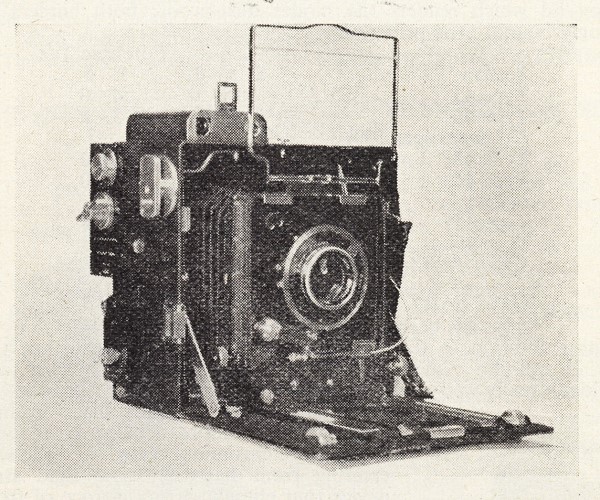
| Home
| Photography Home | Cameras |
![]()
| Previous |
The first MPP Press camera

M.P.P. PRESS CAMERA
(Micro Precision Products Ltd., 145, London Road, Kingston-on-Thames)
The M.P.P., as reviewed in this column, was introduced as a technical camera which at the same time had already found acceptance in Press circles. Since then, many improvements have been added to the Press version which leave little to be desired. Probably of greatest importance is the Wray self-capping focal plane shutter, which is provided with three tensions, and six slit widths, with bulb and time. A body release, too, has been provided for the sector shutter, and is provided with adjustment to enable different shutters with varying release levers to be accommodated with the minimum of trouble. The detachable front panel has a 2 ¾ -in. diameter aperture. Synchronisation, with solenoid actuated shutter release, has now been built in. So much for shutters. The Press version now has double extension, the sacrifice of the triple extension - a refinement proper to the technical camera, but not called for by the Pressman - enabled some saving to be made in body thickness. Similarly, some saving of thickness has been made by omitting the swing back, but the revolving back is retained. The wide-angle facilities have been not only retained in this model, but improved. The base drops down, as before, but now a link motion similar to that of the Graflex enables the short-focus lens, still on its horizontal slides within the camera body, to be operated with the usual focussing head, which, of course, has been carried down with the baseboard to give freedom of field for the wide-angle lens. Another improvement in this connection relates to the infinity catch, which, in addition to possessing improved rigidity, now operates slightly behind the normal infinity position, thus providing for the use of infra-red material. For normal use the lens is racked forward a fraction to the infinity mark on the scale. The camera is now range-finder coupled, and a noteworthy point is the excellent visibility of both rangefinder fields. We may be difficult, but we too often find difficulty in. picking up the second field in a double-image rangefinder. With this rangefinder we were, on the contrary, quite unable to lose it ! Parallax has now been provided for by the horizontal limit wire, to be seen near the top of the frame-finder in the illustration. This wire marks the upper limit of the picture at 3-ft. Distance with a 5-in. lens, the full height of the frame being correct for infinity. Two minor, but by no means unimportant, improvements concern the baseboard struts, which are now no longer releasable by downward pressure on the strut itself, but have to be deliberately released by depressing the button to be seen just in front on the baseboard; and the carrying strap which is now provided with a quick length adjustment, for optimum comfort and security, to the user's requirements. M.P.P. are now in production with their own double dark slides for this camera, in two patterns, for plates and cut film respectively, priced at £2 l0s. Each. The price of the camera, without slides or lens, and not subject to purchase tax, is £85. |
British Journal (Photographic) Almanac, 1950
| Previous |